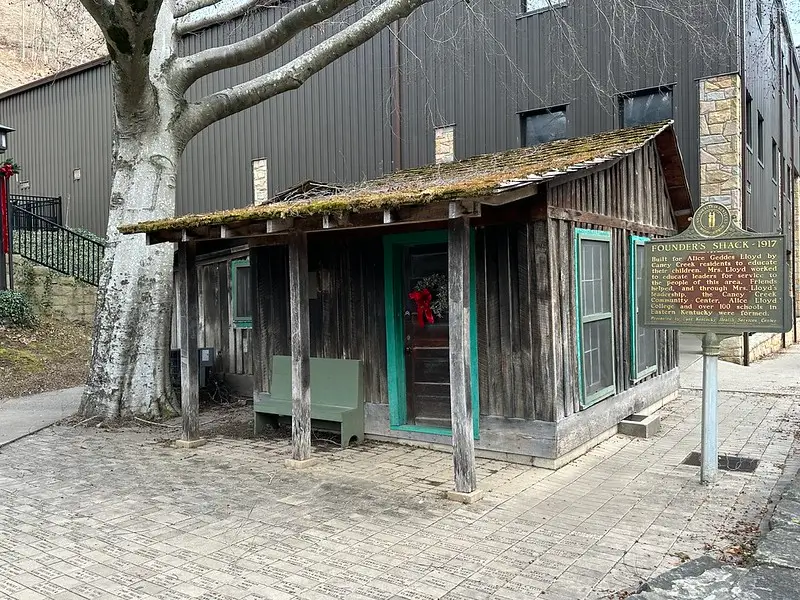Appalachian History Series – Little Shepherd Trail: Inspiration Mountain on the Spine of Pine Mountain If you ease your car out of the Clover Fork valley and up US 421, there is a point where the pavement breaks over the spine of Pine Mountain and a narrow road slips away along the crest. Locals call it the Little Shepherd Trail.
Abandoned Appalachia Series – Goss Park and Cupp Lake of Harlan County High along the crest of Pine Mountain, where the Little Shepherd Trail clings to the ridge above Putney, there is a quiet pull off that looks almost forgotten. A few old tables, a weathered shelter, a narrow lane down toward a small mountaintop lake. On modern maps it appears as Goss Park or Goss Park Camping Area. In tourism copy it is sometimes called a hidden gem.
Appalachian Figures Series – The Story of Ronald D. Ray of Perry, Kentucky On a ridge above Frankfort, where the wind comes hard off the Kentucky River, a granite sundial throws its shadow across a fan of stone. Each day the shadow falls on the name of a Kentuckian killed in Vietnam, timed to the anniversary of that soldier or Marine’s death.
Appalachian Figures Series – The Story of the George Sharp Davis of Perry, Kentucky On a cool October day in 1937, a coal cutter from Hazard walked into a temporary studio and sang “The Harlan County Blues” for Alan Lomax.
Appalachian Figures Series – The Story of Joseph C. Eversole from Perry, Kentucky If you stand on Graveyard Hill above downtown Hazard and look past the traffic and parking lots below, the story of Perry County’s founding families is written in stone.
Appalachian Figures Series – The Story of the Phipps Family of Knox, Kentucky Drive the back roads of Knox County and the Phipps name turns up like a recurring verse. It is etched into marble and sandstone on hillsides above Stinking Creek and Lynn Camp, tied to old farmsteads near Emanuel, and still spoken in the present tense at Old Phipps Cemetery near Gray.
Appalachian Figures Series – The Story of Sam Smith of Perry, Kentucky In the mountains around Hazard, Kentucky, the name Sam Smith shows up everywhere in the records. Nineteenth century tax lists and cemetery stones carry it. So do twentieth century rosters and modern police reports. For basketball fans in eastern Kentucky, though, Sam Smith means one man in particular.
Forgotten Appalachia Series – Hope Cottage and the Ivis Community Center of Knott County, Kentucky If you follow Right Fork of Troublesome Creek out from Hindman, the road narrows into a string of houses, churches, and hollows that once centered on a small country post office called Ivis. For more than half a century that post office linked an out of the way community to the wider world.
Appalachian Figures Series – The Story of Abisha Johnson of Knott, Kentucky On a narrow shelf of land along Caney Creek in Knott County, Kentucky, a hillside campus climbs toward the trees. Students hurry past the Founder’s Shack on their way to class, and visitors read a historical marker that tells how Alice Lloyd and June Buchanan built a work college in this valley.

Appalachian History Series – Founder’s Shack of Pippa Passes, Kentucky: One Room Beginning of Alice Lloyd College On most college campuses the oldest building is a brick hall or a stone chapel. At Pippa Passes the story begins in a small shack of rough boards and a sagging roof, tucked beside the creek that gave the institution its name.
Appalachian Figures Series – The Story of George Johnson of Mason, West Virginia On a cold week in November 1966, the Mason County sheriff’s office suddenly became the front desk for a national monster story. Within days of the first “man sized bird” sighting near the old TNT area north of Point Pleasant, reporters were calling, cars were lining the back roads, and frightened residents were phoning in strange lights and red eyes in the dark.